
Add Fabric
Add Fabric Seed Switch
There are features and functions used in UNUM Manager and UNUM Analytics that are common throughout the user interface (UI). Please refer to the Common Functions section for more information on the use of these functions and features.
UNUM Add Fabric
To add a Fabric and begin the UNUM configuration process, right-click on Global and select the Add Fabric icon or select Manager → Fabric → Add Fabric.
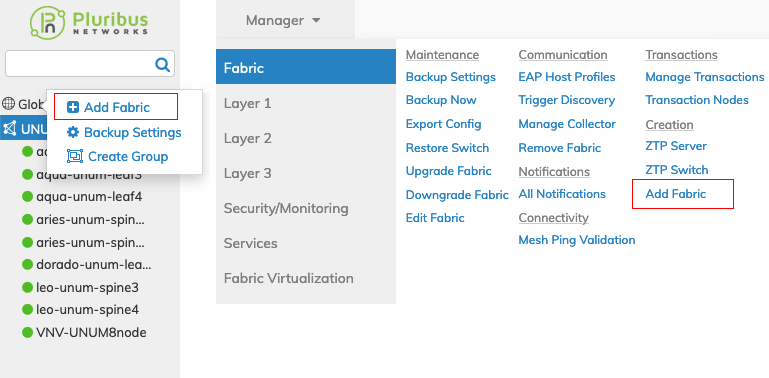
UNUM Topology Left-hand Navigation - Add Fabric Menus
Select the applicable Fabric create option.
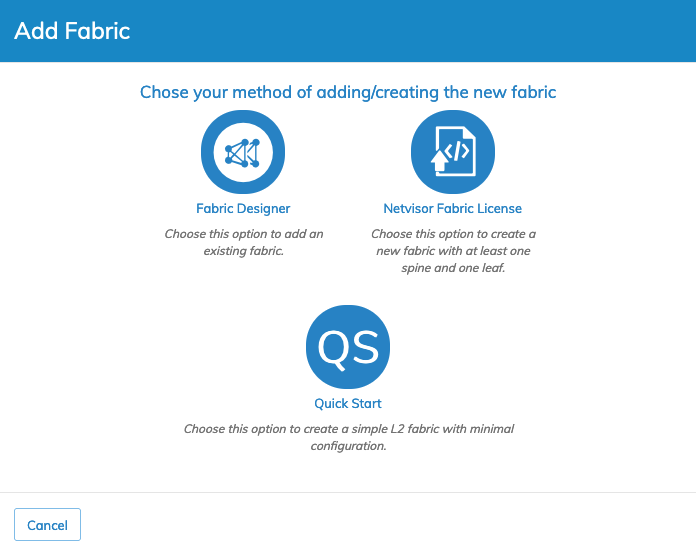
UNUM Platform Global - Add Fabric
Fabric Create Options
Select the Add Fabric option based on the type of fabric you want to add or create:
Fabric Designer – add an existing fabric via a seed switch.
Netvisor Fabric License – create a new fabric with at least one spine and one leaf.
Quickstart – Create a simple L2 Fabric with minimal configuration.
Note: Users can configure multiple Fabrics in parallel after completing an initial configuration. While the first Fabric is being created/discovered you launch another Fabric creation process by clicking on the applicable Fabric icon as shown above.
Fabric Designer
Fabric Designer provides an easy to use interactive configuration process for adding an existing Fabric to your UNUM instance.
Note: The grayed-out icons in Fabric Designer are for future improvements and not used in UNUM 6.0.x.
Click the Fabric Designer icon to add an existing Fabric.
![]()
UNUM Platform Global - Fabric Designer
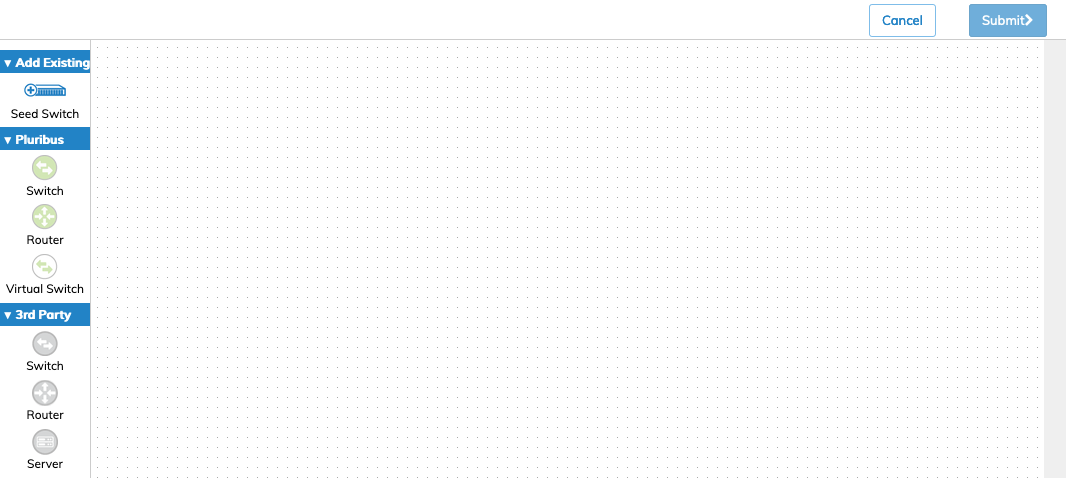
UNUM Platform Global - Fabric Designer User Interface
Drag and drop the Seed Switch icon on to the planning surface. Enter the Seed Switch name or IP address, the applicable control Port (default is port 80), and the User Name and Password.
After entering the required information, click Fetch to begin the process.
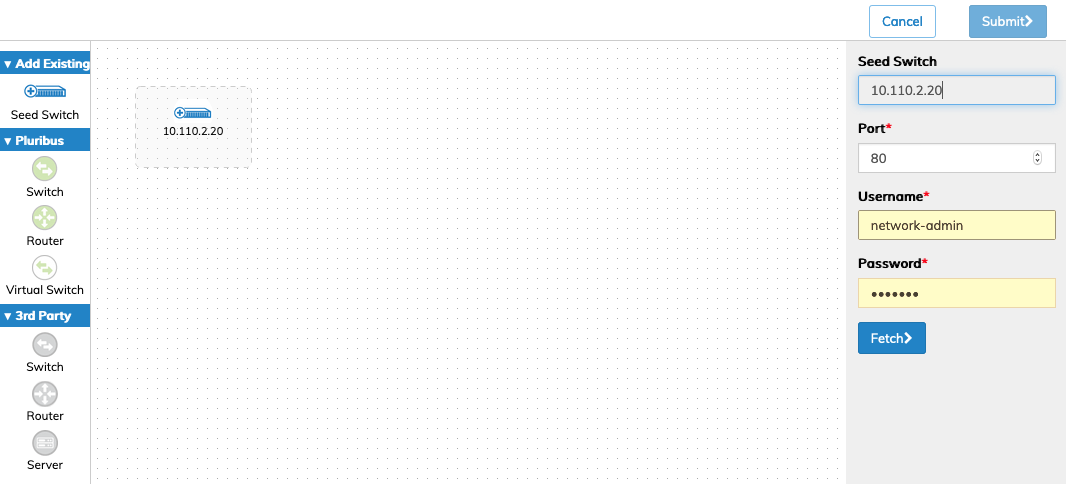
UNUM Platform Global - Fabric Designer User Interface Seed Switch Example
After entering the required information, click Fetch to begin the process.
After a short period and if the seed switch is detected and authorization occurs, the planning surface updates with the seed switch and associated switch details.
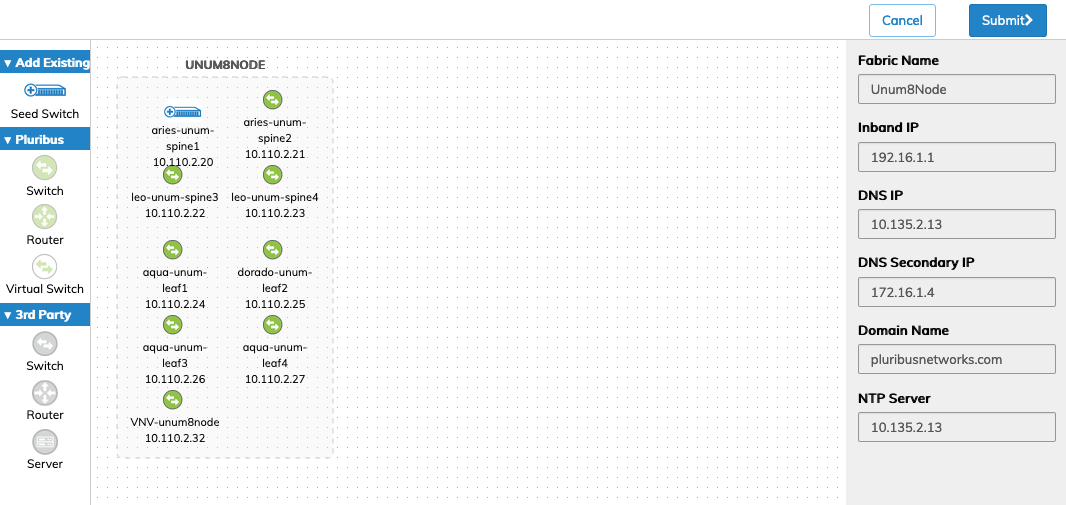
UNUM Platform Global - Fabric Designer User Interface Fabric Displayed
The details of the Fabric Name, Inband IP Address, DNS Settings, Domain Name, and NTP Server are displayed.
The Fabric window resizes when you move and rearrange the devices on the planning surface, as illustrated below.
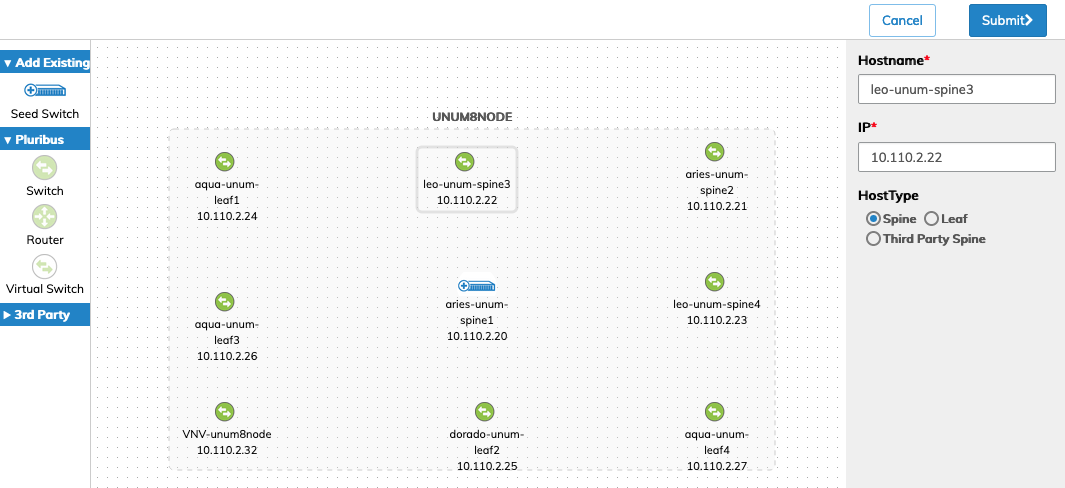
UNUM Platform Global - Fabric Designer User Interface Switch Setting and Layout
Note: Only Add Existing - Seed Switch interactivity is possible at this time. Interactive Pluribus and Third-Party device support is a future feature.
Once making the applicable changes, click Submit to continue or Cancel to return to the previous screen without making any changes.
The UNUM Dashboard displays a message confirming a successful add of the new seed switch.
Conversely, a warning message is displayed should the seed switch fail to be added. You should review all configuration parameters and try again in this event.
The Topology map updates with the added Fabric.
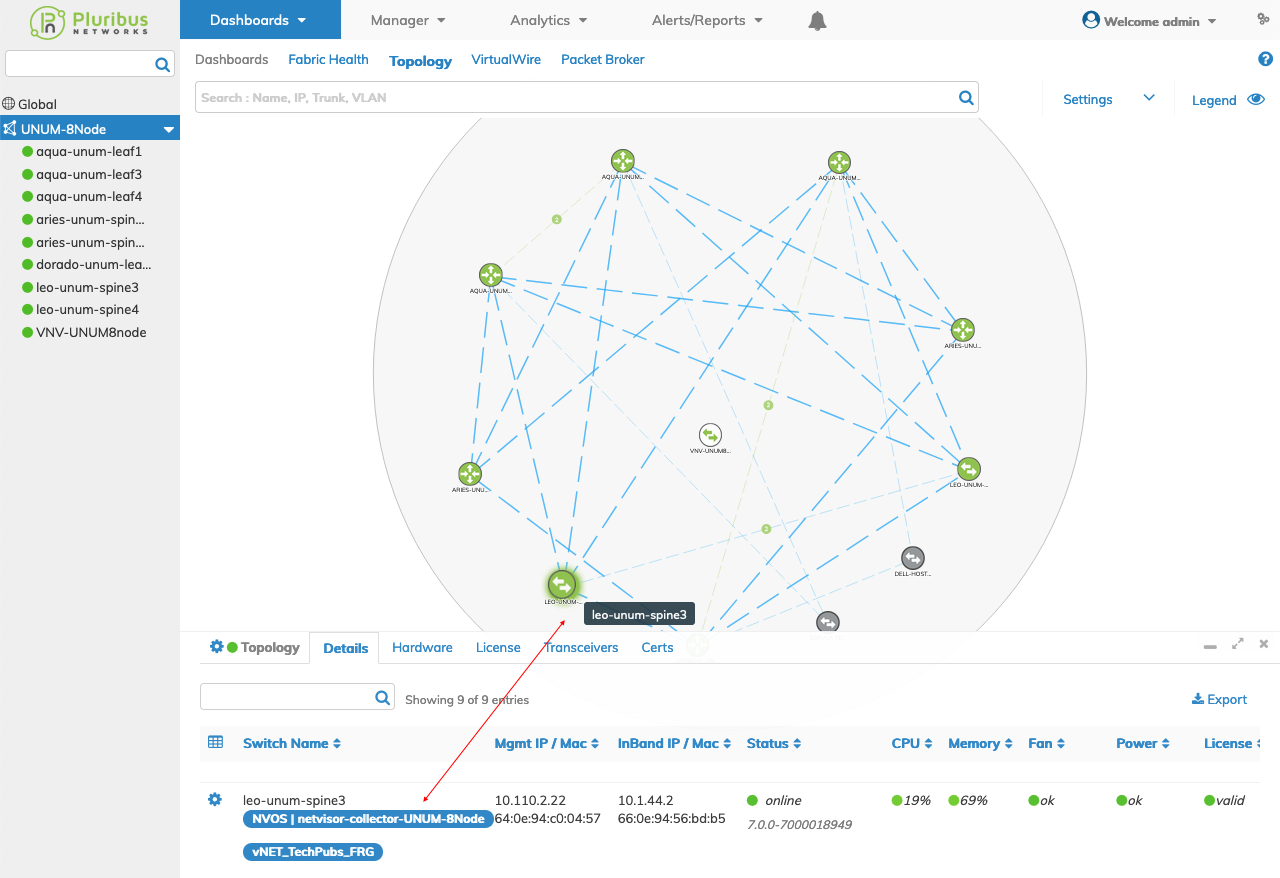
UNUM Platform Global - Fabric Added - Topology Updated
Please refer to the Topology section for more information about feature and functions of the Topology Dashboard.
Note: UNUM automatically creates a default collector titled netvisor-collector-fabricname when the Fabric is created. View and manage the Collector selecting Manager → Manage Collector. A Syslog entry is also created at the same time. View and manage the Syslog selecting Manager → Security/Monitoring → Manage Syslogs.
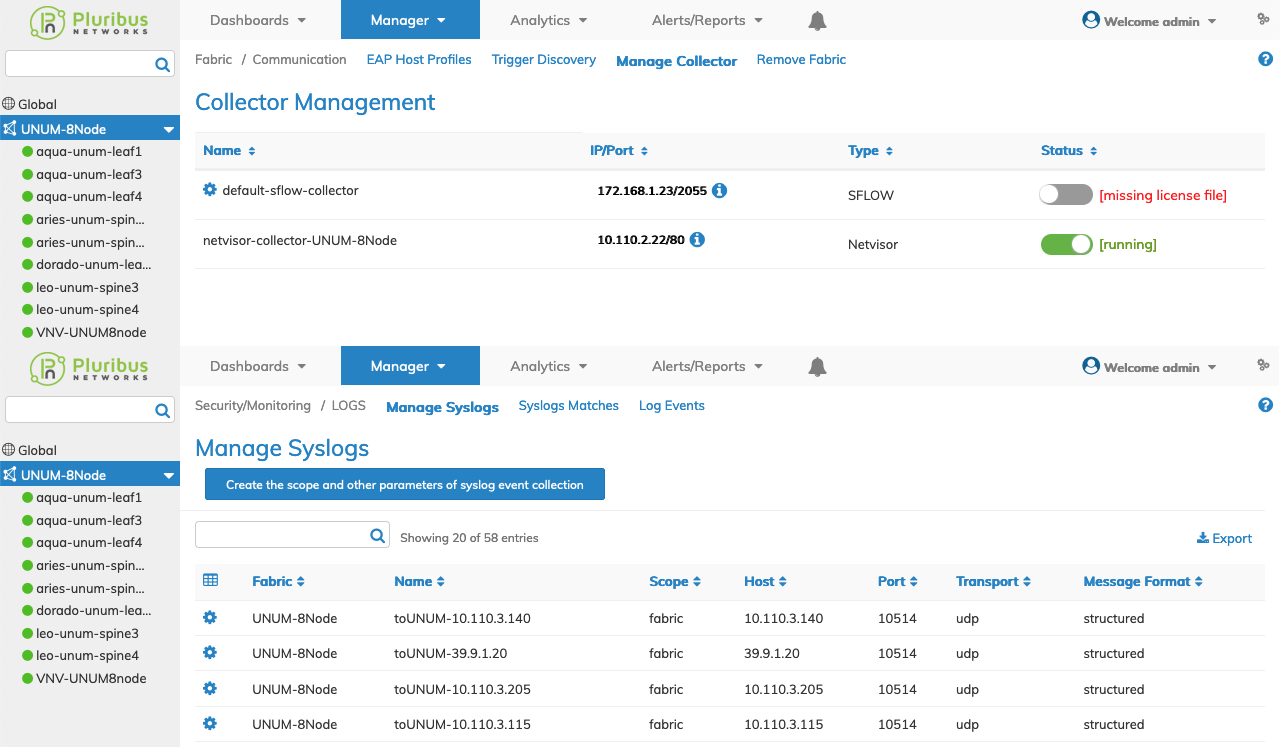
UNUM Platform Global - New Seed Switch Collector & Syslog Example
Please refer to the Topology section for more information about feature and functions of the Topology Dashboard.
Super Fabrics
A Super Fabric expands the maximum number of switches from 32 to 140 using four pods. We use the concept of Pods, with each pod containing up to a maximum of 32 switches.
Refer to the EVPN - Symmetric IRB & Super Fabrics Use Case for detailed information on the use of EVPN.
Concepts and Terminology Used in Super Fabrics
Terminology
•Local – A subnet is deemed Local to a POD if it’s only configured on that POD.
•Remote – A subnet is deemed Remote if it’s not LOCAL on that POD.
•Stretched – A subnet is deemed Stretched if it’s present on two or more PODs.
•IRB – Integrated Routing and Bridging
•EVPN – VXLAN Ethernet VPN
•VRF – Virtual Routing and Forwarding
•VNI – VXLAN Network Identifier
Create a Super Fabric
To create a Super Fabric, drag and drop a Seed Switch for each pod on to the planning surface.
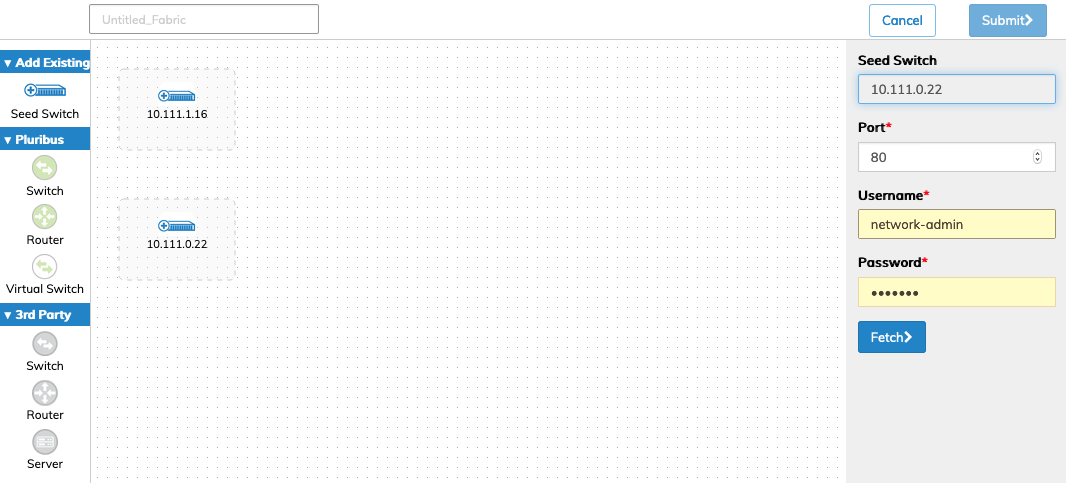
UNUM Platform Global - Fabric Designer - Create Super Fabric
Enter the first Seed Switch name or IP address, the applicable control Port (default is port 80), and the User Name and Password.
After entering the required information, click Fetch to begin the process.
After a short period and if the seed switch is detected and authorization occurs, the planning surface updates with the seed switch and associated switch details.
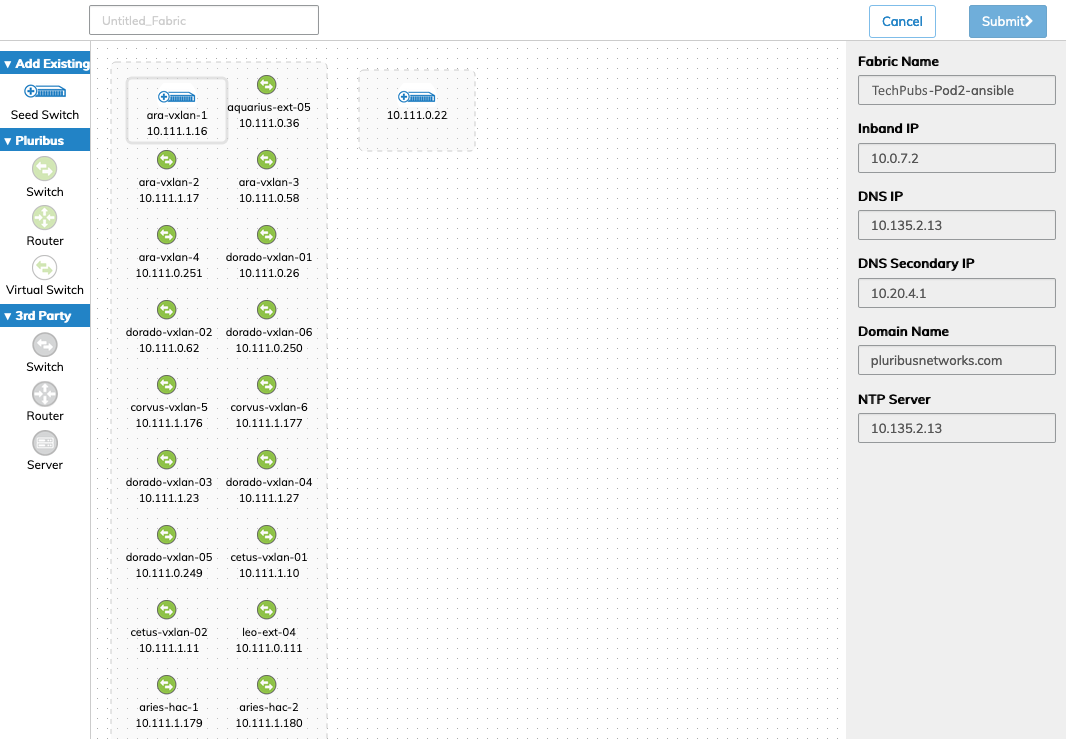
UNUM Platform Global - Fabric Designer - Create Super Fabric Pod 1
The details of the Fabric Name, Inband IP Address, DNS Settings, Domain Name, and NTP Server are displayed.
Repeat these steps for the second Seed Switch.
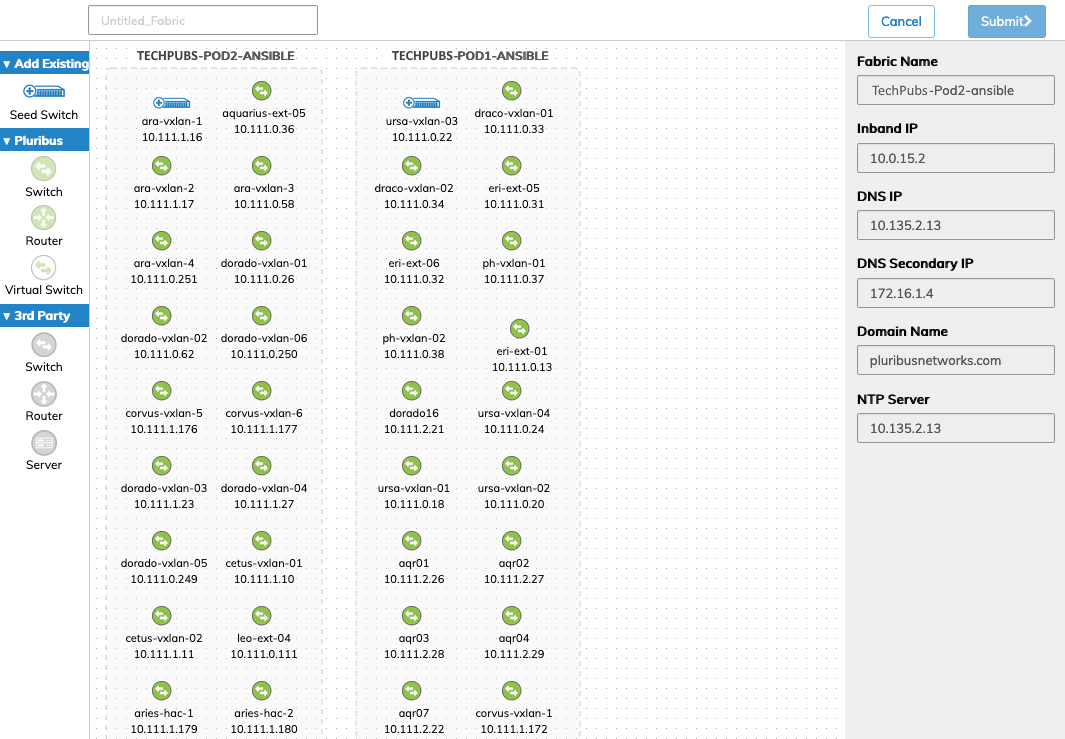
UNUM Platform Global - Fabric Designer - Create Super Fabric Pod 1 & Pod 2
The details of the Fabric Name, Inband IP Address, DNS Settings, Domain Name, and NTP Server are displayed.
As is the case of a standard Fabric, to edit the switch (hostname), IP, and HostType settings, click on a device in the particular Fabric planning surface. The Fabric window resizes when you move and rearrange the devices on the planning surface.
Enter a name for your Super Fabric and click Submit to continue or Cancel to return to the previous screen without making any changes.
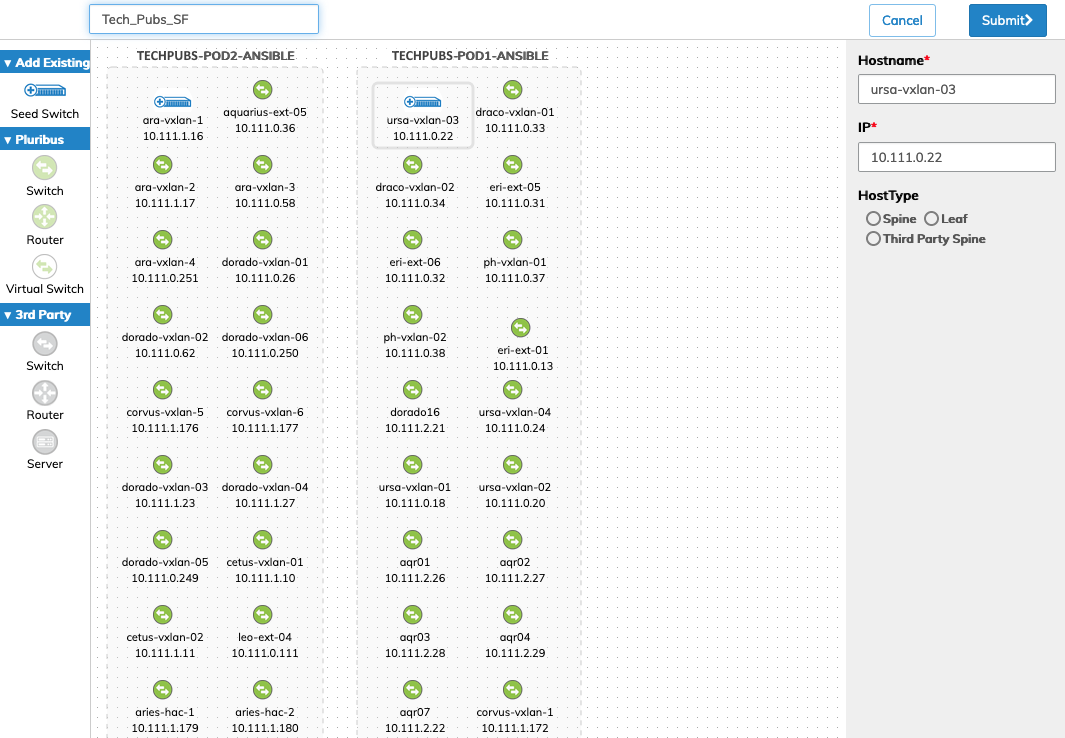
UNUM Platform Global - Fabric Designer - Create Super Fabric Name
The UNUM Dashboard displays a message confirming a successful creation of the seed switches.
Conversely, a warning message is displayed should the seed switch fail to be added. You should review all configuration parameters and try again in this event.
The Topology map updates with the added Super Fabric.
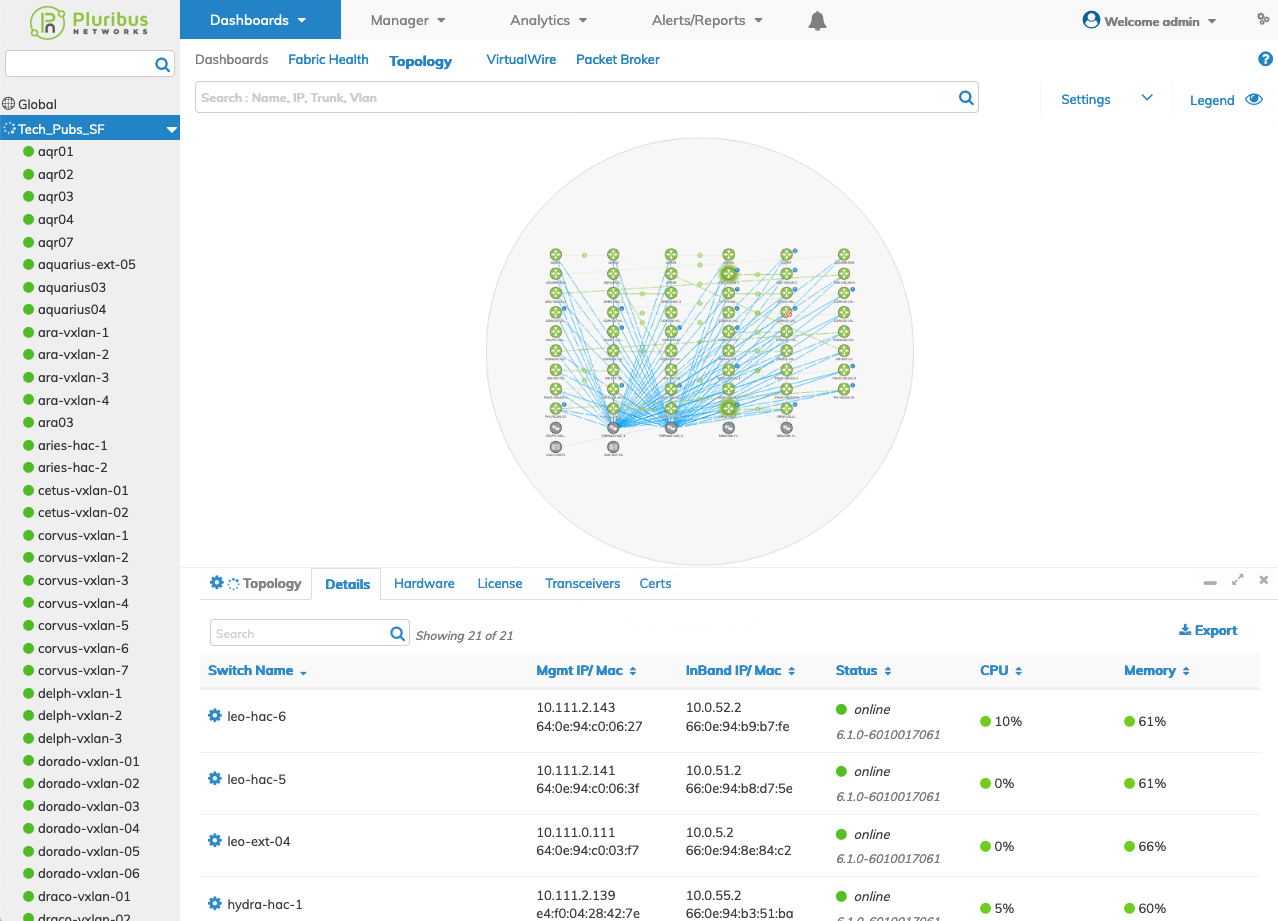
UNUM Platform Global - Fabric Designer - Super FabricTopology Map
Note the difference between the Super Fabric topology icon and a standard Fabric topology icon.
![]()
UNUM Platform Global - Fabric Designer - Super Fabric Icon
For more information on resizing and highlighting specific pod details, refer to the Highlight Pod section of this documentation.
Note: The following features are not supported in Super Fabrics: VirtualWire, Manage Services vLE, Mesh Ping, Manager Layer 3 Subnet, and Manager Layer 3 VRF. When attempting to access these features in a Super Fabric, you will see a "This feature is not supported for selected fabric." warning message.
Please refer to the Topology section for more information about feature and functions of the Topology Dashboard.
